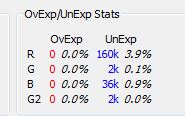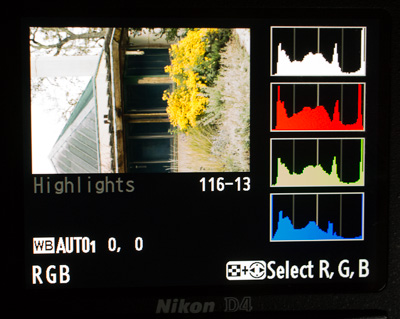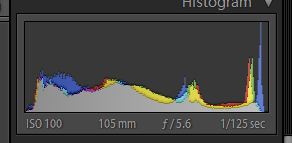In the previous post, we saw that, with standard settings the D4 shows minor clipping in its true raw histogram at the metered exposure for a moderate contrast subject, even though the in-camera histogram looks clipped at that exposure. In this post, I will show what happens when you find the correct ETTR exposure by looking at the true raw histogram with Rawdigger. This is not a practical field technique, unless you’re willing to lug a laptop along with you on your photographic expeditions, but it will tell us what the in-camera and Lightroom histograms look like for the true ETTR exposure.
Increasing the shutter speed by a third of a stop from the exposure of the previous post yields about one pixel in 1000 overexposed, all in the two green channels. Increasing the shutter speed by another third of a stop gets us an image with no clipped pixels. The Rawdigger histogram looks like this:
And the clipping stats are as follows:
The in-camera histogram still looks clipped in all channels:
The Lightroom histogram looks good, although it shows the blue channel to be closer to clipping than the green channel, when, in the raw file itself, the situation is reversed:




Leave a Reply